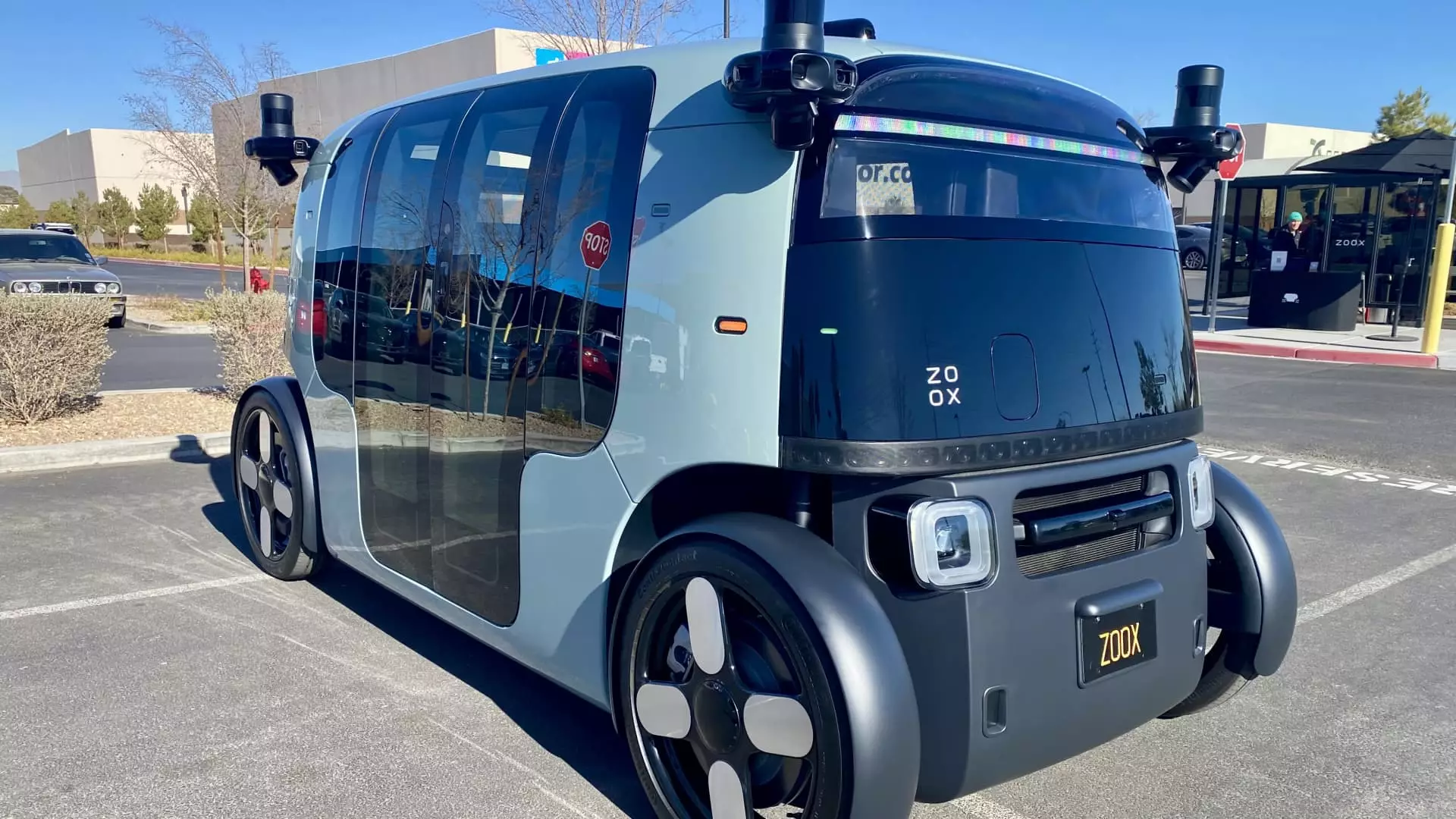Amazon’s foray into the autonomous vehicle industry with its acquisition of Zoox paints a picture of ambition and innovation, but it’s also a venture shadowed by industry skepticism. In recent months, Zoox has been setting the stage to become a serious player in the burgeoning robotaxi market. With plans to significantly expand operations, the company aims to offer rides to the public soon, a move that would mark a critical milestone in its journey. Despite the prevailing doubts in the autonomous vehicle sector—exemplified by the retreat of legacy automotive giants such as GM and Ford from their self-driving initiatives—Zoox remains steadfast, buoyed by the support of its parent company, Amazon.
Zoox has been actively testing its unique, purpose-built robotaxis in various urban environments since early 2023. Unlike many competitors that utilize retrofitted vehicles, Zoox’s design philosophy is cultivated around creating an autonomous vehicle devoid of manual controls, making the experience distinctly different. Currently, the vehicles are undergoing trials in Las Vegas, San Francisco, and Foster City, California—a strategic move considering that each city presents a unique set of challenges and opportunities for the deployment of autonomous technology.
Las Vegas has been earmarked as the company’s first commercial market. The impending “Early Rider Program” serves as a precursor to a wider launch, offering valuable customer feedback crucial for refinement prior to a public rollout. However, the expansion blueprint isn’t confined to Las Vegas alone; cities like Miami and Austin are also on Zoox’s radar, indicating an ambitious vision for widespread adoption of its robotaxi services. By the end of the decade, as Zoox hopes, its vehicles could potentially redefine urban mobility across major U.S. cities.
Zoox’s robotaxi deviates from conventional vehicle design, featuring a distinct boxy shape with two rows of seats facing each other, eliminating the need for a human driver. While some critics have likened the vehicle’s aesthetics to that of a “toaster,” this design is deliberate—intended to optimize passenger space while ensuring safety and functionality. Autonomous vehicle experts, such as Sam Abuelsamid, see the merit in Zoox’s design, suggesting that it could effectively cater to urban passenger needs.
The recent operational trials around the bustling Las Vegas Strip have yielded promising results, showcasing the vehicle’s ability to navigate complex traffic scenarios competently. Observations from these drives reveal a balancing act between cautiousness and assertiveness, crucial traits for any autonomous vehicle to navigate the unpredictable nature of human-driven traffic. However, there were instances of hesitation, such as remaining in long lines of traffic instead of maneuvering around obstacles. Such moments highlight the continuous learning curve that Zoox and similar companies must tackle in polishing their technology.
Despite Zoox’s advancements, the company faces an uphill battle against mounting skepticism regarding the robotaxi business model. Although the technology behind autonomous driving shows steady progress, experts like Abuelsamid question the sustainability of the business framework surrounding these services. Historically, the autonomous vehicle sector has encountered a slew of challenges, from regulatory hurdles to rising operational costs. Companies that once surged forward with grand aspirations now tread cautiously, re-evaluating their strategies in the wake of accumulated experiences.
The contrasting trajectories of Zoox and its competitors further illuminate the volatile nature of the market. While Waymo and others continue to expand their fleets and offerings, Zoox’s pragmatic approach can be seen as both a strength and a weakness. Their commitment to a careful and deliberate scaling strategy underscores the inherent risk in pursuing widespread deployment without extensive groundwork—in an industry still rife with uncertainties.
Zoox’s ambitions resonate beyond mere technological innovation; they symbolize a transformative vision of how autonomous vehicles can alter urban commuting. Yet, as they prepare to enter the competitive landscape dominated by established players like Waymo, the question remains: Can Zoox carve out its niche successfully? The upcoming months will be pivotal in determining whether consumers adopt this new form of transportation or remain hesitant amid doubts surrounding the broader viability of autonomous services.
While challenges will undoubtedly shape the narrative of Zoox, its affiliation with Amazon provides a strong backing that offers both resources and strategic insight. As the still-uncertain future of robotaxis looms, Zoox must remain adaptable, addressing public concerns and ensuring that innovations translate into practical, enjoyable, and safe transit experiences for riders. The road ahead is fraught with obstacles, but with perseverance and ingenuity, Zoox could very well redefine the parameters of urban transportation.

